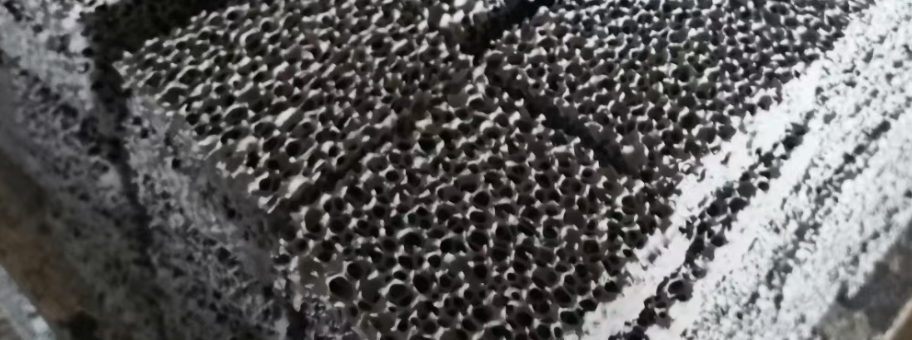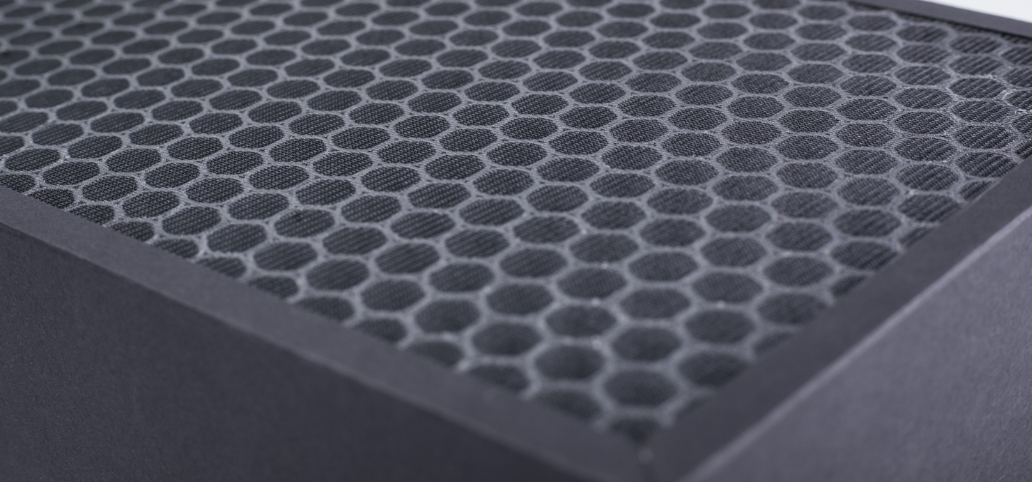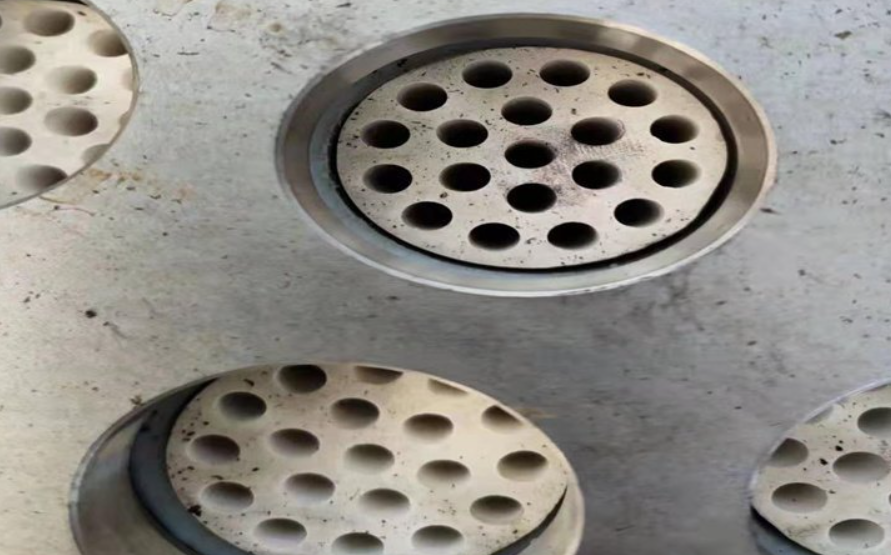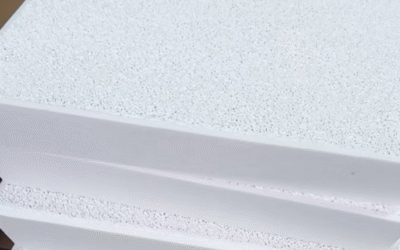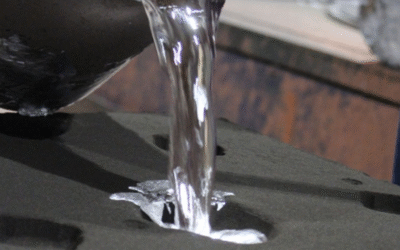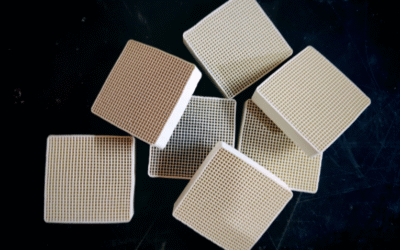I think it’s confusing to choose between a carbon and a ceramic water filter. We all want the same thing: safe, great-tasting water. From my experience, some filters are better for chemicals, while others are better for germs and visible particles. Each type of filter handles water issues differently.
How Each Filter Works: Carbon Filter vs Ceramic Filter Mechanisms
I think it’s important to understand how carbon and Ceramic filters work to choose the best one for you. Each type uses a different method to target specific contaminants.
How Carbon Filters Work: Adsorption and Chemical Filtration
Carbon filters use a process called adsorption. This means impurities stick to the huge surface area of Activated Carbon. This carbon is activated with high heat, which creates millions of tiny pores. To give you an idea, just one gram of activated carbon has a surface area of over 32,000 square feet. This massive area makes the filter very effective at its job.
It is great for:
- Removing things like chlorine, volatile organic compounds (VOCs), pesticides, and bad tastes or smells.
- Converting some contaminants. For example, it changes chlorine into safer chloride ions.
The type and size of the carbon’s pores are very important:
– Larger pores catch bigger molecules.
– Finer pores trap smaller impurities.
From my experience, a filter’s performance depends on flow rate, water temperature, pH, and how long the water stays in contact with it. Once the carbon surface is full, it stops adsorbing impurities. This is why you must replace the filters regularly to maintain water quality.
Example:
- A good example is the Brita jug filter. It uses granular activated carbon to remove chlorine. I’ve found this makes a big improvement in water taste and odor.
- I have tested under-sink activated carbon systems. They removed 100% of the chlorine and also reduced dangerous chemicals like chloroform and trihalomethanes.
How Ceramic Filters Work: Physical Microfiltration
ceramic filters work using mechanical filtration. Water passes through a porous ceramic shell with very small pores, between 0.1 and 0.5 microns. As water flows through, the ceramic barrier blocks:
- Bacteria
- Protozoa
- Suspended solids and sediment
In my view, a ceramic filter is like a microscopic sieve; no chemical reactions happen. Many models also have a thin silver coating. This layer stops microbes from growing inside the filter. I think this helps the filter last longer and stay safe.
One thing to know is that ceramic filtration is not good for dissolved chemicals or heavy metals on its own. It needs to be paired with an internal carbon core for that. Otherwise, chemicals and volatile organic compounds just pass right through.
Example:
- I often recommend the Swiss Katadyn ceramic filter to campers and survivalists. It traps bacteria and particles on outdoor trips. It also doesn’t remove the beneficial minerals. I also like that the filters are easy to clean and reusable, making them a good long-term value.
Carbon vs Ceramic Filter Mechanism Comparison
| Filter Type | Main Process | Typical Pore Size | Removes | Example Uses |
|---|---|---|---|---|
| Carbon filter | Adsorption, chemical conversion | N/A (porous structure) | Chlorine, VOCs, tastes, odors, some chemicals | Pitchers, faucets, HVAC |
| Ceramic filter | Mechanical filtration (microfiltration) | 0.1–0.5 microns | Bacteria, sediment, protozoa | Gravity filters, backpacking |
So, here’s my take: carbon filters are best for adsorbing chemical contaminants using a large active surface. Ceramic filters block microorganisms and particles with their ultra-fine pores. I believe both are valued tools for different water filtration needs.
Carbon Filters vs. Ceramic Filters: What Do They Remove?
Let’s compare carbon and ceramic filters. I’ll look at what each one is designed to remove from your water. I’ll also cover how well they work in different situations and how long they last.
What Ceramic Filters Remove
I find that ceramic filters are excellent for blocking tiny germs and floating debris. They have very small pores—between 0.2 and 0.5 microns—that physically stop contaminants from passing through. In my experience, they are perfect for removing:
– Sediment and water cloudiness
– Harmful bacteria (like E. coli and Salmonella)
– Protozoa
– Microbial cysts
One thing I like is that ceramic filters leave the healthy minerals in your water. This helps maintain a mineral-rich taste. I must point out, on their own, these filters are not good against dissolved chemicals like chlorine or heavy metals like lead.
You can clean and reuse ceramic filters for years with proper maintenance, which I think makes them very cost-effective. Because they provide a physical barrier, their flow rate is slower than carbon filters.
Special Note:
Based on my experience, if you need to remove both germs and chemicals, you should look for a hybrid. Some ceramic filters come with an activated carbon core to give them wider-ranging removal abilities.
What Activated Carbon Filters Remove
I believe Activated carbon filters are the best choice for chemical filtration. They use a process called adsorption, which makes chemicals stick to the carbon’s huge internal surface. They are proven to remove or reduce: – Chlorine (I’ve seen lab tests showing top models can filter up to 6,000 gallons) – Pesticides and industrial chemicals – Medications left in water – Organic compounds – Bad tastes and odors – Some heavy metals (carbon block designs work best for this) – Fluoride (certain carbon blocks can reduce it)
A key point is that carbon filters do not remove bacteria or particles as well as ceramics without extra filter layers. I recommend a carbon filter if you are worried about water taste, odors, and chemical pollutants. Their faster flow rates and larger capacity (6,000 gallons for chlorine vs. 3,030 for top ceramics) can save you time and replacement costs.
Practical Comparison
| Contaminant/Outcome | Ceramic Filter | Activated Carbon Filter |
|---|---|---|
| Sediment, Turbidity | Excellent removal | Less effective alone |
| Bacteria, Protozoa | Blocks tiny organisms (0.2–0.5 microns) | Not effective alone |
| Chlorine | Needs an added carbon core for removal | Very effective (up to 6,000 gallons) |
| Organic Chemicals, VOCs | Needs a carbon element to work | Very effective |
| Heavy Metals (Lead, Copper) | Not effective alone | Some removal (block form is better) |
| Beneficial Minerals | Retained | Some loss can occur |
| Reusability | Washable, lasts years with care | Must be replaced after use |
| Flow Rate | Slower (dense, can clog) | Faster |
Which Filter Should I Choose?
I recommend a ceramic filter if your main concern is safety from germs (like bacteria and cysts) and sediment. They also give you a cost-effective, reusable option. I suggest an activated carbon filter to improve your water’s taste and smell. They are the top pick for removing chemical pollutants and filtering more water between replacements.
For the most complete protection that removes both germs and chemicals, many modern filters combine both technologies. From my point of view, this provides the best coverage for almost any household’s water needs.
Pros & Cons of Carbon Filters vs Ceramic Filters
Are you trying to choose between a carbon and a ceramic water filter? I can help you decide. Each has its own benefits and drawbacks based on what you need, your budget, and how you’ll use it.
Pros of Ceramic Filters
Great Microbial Filtration: What I like most about ceramic filters is how well they remove microbes. They are very effective at getting rid of bacteria, protozoa, and even some viruses. Their pores are tiny—down to 0.1–0.5 microns. These small openings physically block most germs that make you sick. In my experience, this makes them a perfect choice for an emergency kit or for places where the water might have a lot of germs.
Removes Sediment and Cloudiness: These filters do a great job trapping silt, sand, and other fine particles. Water comes out looking clear with a healthy, natural taste.
Keeps Healthy Minerals: Ceramic filters do not remove minerals like calcium and magnesium. This means your water keeps its beneficial mineral content.
Long-Lasting and Reusable: I also like that you can reuse them for a long time. You can scrub many ceramic filters and reuse them for up to 2 years. For example, ceramic candle filters often last 6 to 24 months. You can refresh them through cleaning or backflushing.
Low Operating Cost: The yearly maintenance cost is low. It is usually less than $50 for a new cartridge, and most replacements cost under $30.
No Power Needed: These filters work without electricity. I recommend them for off-grid living, emergencies, or travel.
Flexible Options: Some models mix a ceramic outer shell with activated carbon or other Filter Media. This improves contaminant removal without losing germ protection. Berkey and Doulton gravity filters are good examples of this.
Cons of Ceramic Filters
Poor Chemical Removal: A ceramic filter alone cannot remove chemicals mixed in the water. This includes chlorine, VOCs, fluoride, or heavy metals like lead and copper. To remove these, you need to pair it with another type of filter.
Slower Flow Rate: I’ve noticed their dense structure means filtration is slower. This is a bigger issue in gravity systems or when the water has lots of sediment. This might not be the best fit for large families or places with high water usage.
Can Break Easily: You need to handle ceramic with care because it is fragile. Accidental drops or rough cleaning can cause cracks. If it cracks, you will need to replace the entire filter.
Needs Frequent Maintenance: The tiny pores can clog with dirt, which reduces water flow. I suggest you perform regular gentle cleaning with a soft brush. Using a sediment pre-filter can also help it perform well.
Doesn’t Remove All Viruses: Ceramic filtration does not remove every virus. You might need to add an extra treatment step in areas with known viral risks.
Pros of Carbon (Charcoal) Filters
Excellent for Taste and Odor: In my opinion, activated carbon is fantastic for removing chlorine, pesticide traces, certain VOCs, and many organic compounds. It makes water taste and smell much better. I find this is great for city water or well water that might have chemical runoff.
Removes Some Heavy Metals and Fluoride: Block carbon filter designs can also reduce lead, copper, and even some fluoride. This offers you broader protection.
Keeps Some Minerals: Good carbon filters keep water tasting fresh and leave in the healthy minerals.
High Capacity & Durable: From what I’ve seen, quality black carbon blocks from brands like Boroux can filter up to 6,000 gallons of water. That is about double the life of some ceramic models.
Easy to Use: I think carbon filters are simple to manage. Replacement is quick, with no scrubbing needed. The cost is fair and almost always below $50 per replacement.
No Electricity Needed: Carbon filters work in both pressurized and gravity-fed systems. This makes them useful in many different setups.
Fits Most Systems: Most common filter housings are compatible with carbon. This makes upgrades or replacements very simple.
Cons of Carbon (Charcoal) Filters
Single-Use, Not Washable: Once a carbon filter is full, you must replace it. You cannot clean and reuse it. I suggest keeping spare filters on hand, but this does generate more waste.
Weak Against Microbes: On its own, carbon is not able to remove bacteria, protozoa, or viruses. If your main worry is about germs, a carbon-only filter will not be enough.
Not a Complete Solution: Some heavy metals, viruses, and tiny particles may get through. This is why I often recommend that people pair carbon with another filter stage, such as ceramic.
Physical Durability: While not as fragile as ceramic, carbon filters can chip or crack. For everyday home use, they are sturdy enough.
Lifespan Varies: Lower-cost or granular carbon filters may need replacing more often. Some of the better blocks, though, can match or beat ceramic filters in terms of gallons filtered.
Bottom Line: My Recommendations
I suggest you choose ceramic for the best germ protection, low-cost reusability, and for off-grid or emergency use. You just have to be okay with its slower performance.
I suggest you choose carbon for pure, pleasant-tasting water and broad chemical removal. It’s very easy to maintain, as long as microbial safety isn’t your top priority.
For the best protection, I recommend combining both in a dual-stage filter system. The ceramic blocks germs and particles, while the carbon removes chemicals, tastes, and odors. This setup gives you clean, safe water for most household or travel needs.
My Guide: Where to Use Carbon and Ceramic Water Filters
Common Uses for Carbon Filter Systems
From my experience, carbon filters are a great choice for point-of-use (POU) systems. This means you filter water right where you use it, like at your sink. They work well in homes and businesses. I often find them in these devices:
- Under-sink and countertop filters: I recommend these for home kitchens. Carbon block cartridges target a wide range of contaminants. They remove particles, cysts, lead, and volatile organic chemicals (VOCs). They also get rid of bad tastes and smells.
- Refrigerator water filters: These use carbon blocks to make your drinking water taste and smell much better. They do this by removing chlorine and other things that affect water’s appearance. They work fast, even when water just passes through.
- Portable water filter bottles and pitchers: If you need clean water while you’re out, I suggest these. The compact carbon filters offer reliable contaminant reduction. I also find maintenance costs are low, as these filters resist bacteria and carbon particles stay inside.
Common Uses for Ceramic Filter Systems
I believe ceramic filters are best when you need three things most: safety from germs, durability, and low long-term costs.
- Gravity-fed countertop and pitcher filters: I see these used often in low-resource settings, emergencies, and rural areas. Ceramic filters trap cloudy particles, sediment, and harmful germs. This makes them a trusted choice for disaster relief or off-grid households.
- Ceramic candle filters in home gravity kits: A great thing about these is they don’t need electricity. I recommend them for getting safe drinking water in developing countries, camps, or during outdoor trips.
Which Filter Should I Choose?
I recommend carbon filters for city homes and offices. They are perfect if you want cleaner-tasting water that is free of chemicals. They are best for small setups and easy maintenance.
I suggest ceramic filters if you are worried about biological threats. They are excellent for rural, emergency, or off-grid situations. They’re also smart if you want a durable filter that keeps healthy minerals. They are easy to clean, reusable, and cost-effective for long-term use.
Summary
Based on my experience testing both filter types, the best one for you depends on your water issues.
- Carbon Filters: I suggest these if you need to remove chemicals or fix bad taste and odor.
- Ceramic Filters: I recommend these for bacterial protection and long-term use.
I’ve found that using both filters together gives you the cleanest and safest water. Whichever you select, you are making a positive step toward better water for your household.

